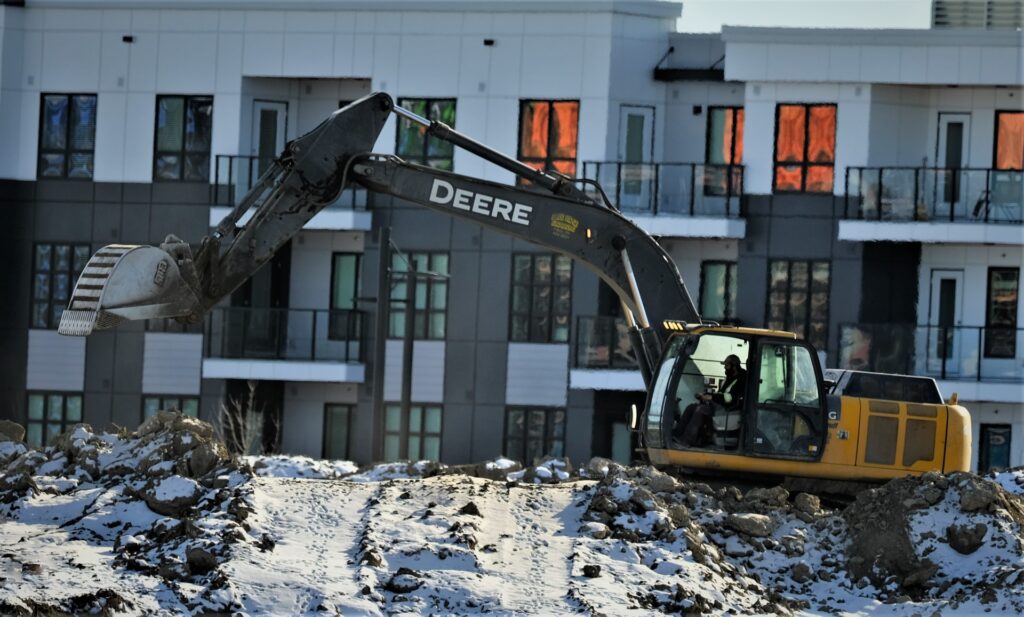
Selling a House Without Permits (and Why You’ll Want Them)
Permits are highly important forms of approval that are provided by local government agencies. In many cases, different types of permits are needed for a construction project to make sure that the plans for the project at hand meet local zoning regulations. If the plans don’t adhere to zoning laws, the project manager will be required to alter the building plans before approval can be granted. Once approval has been granted, you or the contractor you’ve hired should be able to go forward with a remodeling or construction project.
While building permits are commonly obtained for construction projects of new buildings, homeowners may also be required to get a permit in certain situations. If you’re remodeling your home by adding a new room or changing the structure of the property in any way, you will likely need to obtain a permit before work can begin on your project. Permits are considered to be safeguards for homeowners. If you complete a renovation on your home without seeking a permit, the work would be deemed to be unpermitted, which can create numerous problems if ever you intend to sell the home.
For instance, the lender for the buyer may not feel comfortable underwriting the loan if unpermitted work is found, which means that you might be required to reverse the work that’s been done or make corrections that would bring the work up to code. Keep in mind that constructing without a permit is considered to be illegal. While the penalties aren’t too severe, the hurdles that unpermitted work can cause you to go through when selling the home aren’t worth it.
Even though most projects must be completed with a permit, the types of projects that you can perform without a permit include simple ones that can be completed without altering too much of your home, which extend to projects like painting, having new cabinets installed, replacing a faucet, completing simple electrical repairs, and installing carpeting around the home. While permits are relatively simple to obtain, many people avoid getting them because it can take time and a small amount of money for a permit to be approved, which can be frustrating when homeowners want to immediately get started with work. However, the hassle that comes with not getting a permit can be much worse. This article goes into detail about what happens when you sell a home without first obtaining a permit.
Key Takeaways:
- There are many different types of permits that are required to complete a construction project which are regulated through your local zoning area.
- You can tell if your new home has had unpermitted work done by checking with your county or city records from the building department in your area.
- The three ways to sell a house with unpermitted work include: removing the unpermitted work, seeking a retroactive permit, or selling the house as-is.
How To Tell If Your Home Has Unpermitted Work

Unless your property was newly constructed when you first moved into it, there’s always a possibility that a previous owner completed work that wasn’t backed up by a permit of some kind. When selling your property, it’s important that you have a full history of the home, which is why you should focus on learning if your home has unpermitted work. Likely the best way to determine if unpermitted work has been done to your home is to pull county or city records from the building department in your area.
With these records in hand, you can see if the current layout and design of your home matches the permit plans. In the event that the plans don’t match, it’s possible that unpermitted work occurred on your home in the past. Keep in mind that it costs nothing to gain the building plans from the local building department. It’s highly recommended that you go this route to avoid having a problem occur later on when you place your home on the market.
You don’t want to find out from a home inspector that unpermitted work has occurred while you’re attempting to close on your home, which may require changes that would only serve to delay the closing process. Today, more than ever, buyers are adhering to the “buyer beware memo”, which means that buyers are cautious when searching for a home and are more likely to do their due diligence.
What To Do If Your House Has Unpermitted Work?
Even though you can still sell your home if there is unpermitted work in it, it’s recommended that you attempt to correct the issue and reverse the work that’s been done to your home. The penalties that you can face if you don’t make repairs or obtain a retroactive building permit may be high. If a project is currently ongoing without a permit attached to it, it’s possible that local officials could find out.
Whether the project is reported by someone or an inspection occurs on your property that locates the unpermitted work, you would likely be required to wait to complete the project until a permit has been obtained. If this work is identified only after it has been completed, you may need to pay fines or spend money to bring your home up to code. The latter option could cost you thousands of dollars.
Selling a House Without Permits
If you find that your home has some unpermitted work in it, there are several steps that you can take. Keep in mind that this work is considered to be illegal, which means that lenders are going to be wary about providing a loan to cover this type of property. There are three main options that you can follow if your home has unpermitted work in it, which include removing the unpermitted work, obtaining a retroactive permit, or selling the home as-is.
Option 1 : Remove Unpermitted Work

While this option can be difficult, time-consuming, and costly, you could remove the unpermitted work, which would allow the property to be up to code and wouldn’t create issues when you’re trying to sell the home. If the unpermitted work was small and only involved some minor renovations, making changes to this work could be simple. This may even be the easiest option in certain situations. If a garage was converted into a bedroom with added carpet, removing the carpet and any other changes that allow for the conversion would likely be a straightforward process.
Option 2: Seek a Retroactive Permit

Another option at your disposal is to seek a retroactive permit, which would allow the work that’s already been done to be officially permitted. The main benefit of going this route is that you would no longer face the penalties that come with having unpermitted work on your property. Certain locations will allow homeowners to get a retroactive permit to cover the previous work that was done to their home.
Once you apply for a retroactive permit with the LADBS, an inspector will take a look at the completed work to make sure that it adheres to the local building code. This inspector could ask you to make some small changes or may request that you completely reverse the work. If the unpermitted work was done by a previous owner, it could be easier to obtain one of these permits. The cost that you pay to obtain a retroactive permit depends on the size of the project and the amount of changes that need to be made for the building to get back up to code.
Before seeking one of these permits, ask a contractor to take a look at the unpermitted work. They should have some idea of what it will cost to make the necessary changes that the LADBS will likely request. Try to do this before listing the property. If you only look to get a retroactive permit after the home has been listed, the closing process could extend further than the typical 30-45 days. The retroactive-permit process can take anywhere from a couple weeks to a few months to complete. The main benefit of going this route is that you should be able to maintain the current market value of your home.
Option 3: Selling the House As-Is

You could also attempt to sell the home “as-is”. While it’s possible to sell a property with unpermitted work, you are required by law to disclose all previous unpermitted work to potential buyers. It’s likely that being up-front about the work that’s been done to your home will make the buyer more satisfied with their purchase, which is particularly common with smaller projects. If the project was larger in scale, the listing price of your home may need to be lowered to reflect these issues.
As touched upon previously, lenders are more wary about providing a loan on a home with unpermitted work because it increases their risk, which is something that you may need to account for when calculating the market value of the home. For those who are buying a home with unpermitted work, it’s important to take safety precautions into account. If work to a home hasn’t been properly permitted by the LADBS, it’s possible that the area where the work was performed may not be up to code, which could be dangerous for anyone who continues to live in the property. This is another reason why lenders don’t always provide mortgage loans for “as-is” properties.
Other Considerations When Selling Your House With Unpermitted Work
There are a few additional considerations that you should keep in mind when selling a home with unpermitted work. For one, it’s possible for this type of work to adversely affect insurance. If certain aspects of the property aren’t up to code, insurance costs could be significantly higher. It’s also important to understand that the buyer of an “as-is” property will take on full responsibility for the unpermitted work once the home has been purchased.
However, legal recourse may be possible if the buyer is injured as a result of the unpermitted work. In the event that the initial work wasn’t up to local building codes and these issues result in the buyer becoming injured, the previous owner may be held liable for the injuries and any medical costs pertaining to them. Along with the possibility of facing a lawsuit, the major penalties associated with unpermitted work include heavy fines and being required to pay for reversing the work or bringing it up to code.
While many homeowners wish to avoid the lengthy process that comes with obtaining a permit for a construction project or renovation, seeking a permit will help you avoid the future problems that can come with doing work on your home before you’ve obtained a permit. When work has been properly permitted, the resale value of your home will remain the same or potentially increase, which is preferable to the alternative.

Jason Somers, President & Founder of Crest Real Estate
With over 15 years of professional experience in the Los Angeles luxury real estate market, Jason Somers has the background, judgement and track record to provide an unparalleled level of real estate services. His widespread knowledge helps clients identify and acquire income producing properties and value-ad development opportunities.
Learn more about Jason Somers or contact us.



